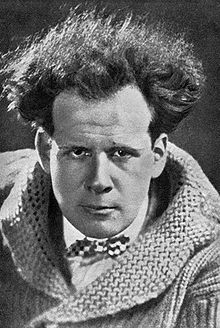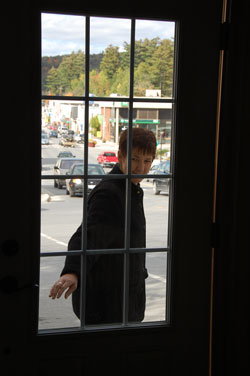I am prompted by this ridiculous story about a young woman training to become a teacher. She had once posted a picture of herself drinking, wearing a pirate hat, at a party, on her Myspace page. later in life, while in placement as a prospective teacher, her supervisor googled her and spotted the picture and expressed his deep, solemn, disapproval. He and the dean of Millersville University School of Education, in their ultimate, beneficent, instructional piety and wisdom, decided that Ms. Stacy Snyder was thereby not worthy of a teaching job, and denied her a teaching degree.
Ms. Snyder went to court and, stunningly– to me– lost. (Of course, this was a U.S. court, where judges are elected by the same people who made Britney Spears a household name). The ruling was that this was not an infringement of her right to “free speech”. Is that what they thought the issue was?
How dare they? How dare those puritanical, self-righteous, stupid zealots deprive this young woman of her dreamed-of career because she didn’t meet their fanatical standards of purity and innocence?
I’ll bet those gentleman are patriotic. I’ll bet they are pious. I’ll bet they are believers. I’ll bet they would feel far more comfortable living with a bunch of Islamic extremists than they could ever imagine. I’ll bet that deep down in their tiny, crispy, blackened little hearts, they would love to force Ms. Snyder to wear a burka.
* * *
One thing I’ve always liked about the Dutch– and one reason a lot of people don’t like them– is this kind of pragmatism that was apparently too rational and sensible for the delicate Americans.
July 9, 2010
[I’m going to note in fairness here that getting accurate, detailed information about this well-worn story about the six-year-old kissing his classmate is difficult, and there are websites out there that believe the offense was more serious than just one kiss. On the balance of things, however, I still think giving the six-year-old a suspension was a tacit confession that the adults in charge had no clue about their jobs, children, or life. While I’m at it, let me note that as for the woman who sued McDonald’s because the coffee was too hot– I’m on her side. There’s a lot more to that story than the media generally admits. It’s become a stalking-horse for conservatives who want to relieve corporations of liability for their defective or dangerous products.]
Speaking of alleged urban myths… has there been a single confirmed use of the “date rape” drug yet?
We appear to have quietly entered an era of Neo-Puritanism in North America. While you can show any kind of violence, blood-letting, torture, cruelty, dismemberment, and murder on television or movies at any time or place, we have become extremely weak-minded and hysterical at the idea of sex.
Part of this is due to the unfortunate, unholy alliance between feminist psychology and Christian fundamentalism in the 1980’s. Off-hand, you might think these two cultural streams had very little in common. They did. But there was one thing they shared: an almost frantic paranoia about sexuality. The result: a kindergarten student is suspended for kissing a classmate on the cheek. Another student is taken away in handcuffs are drawing pictures of weapons. And another student is busted for waving a chicken-finger like a gun.
But the most egregious sins of this ilk are committed by middling managers– people who have some authority because they are astute suck-ups with a bit of education who can fill in forms and transfer money to consultants. They are afraid to make real decision and, therefore, not really smart enough to evaluate advice either. They always tell you, “the consultant said…”, or “the expert said…” So they see the 6-year-old kissing a classmate and they are too crumblingly stupid to realize that this was not ever what was intended by the term “sexual harassment”. * * *
What if your school day consisted of playing guitar, making papier-mâché “aliens” for your Mars project, dropping eggs from the roof to see how they splattered, and learning how to create puppets? Insanity, right? That’s how St. Ann’s School in Brooklyn Heights operates.
I don’t know why it’s taken me 54 years, but I have finally begun to realize just how arbitrary so many of our social and cultural institutions are. In the 60’s and 70’s, we often talked about how schools basically train us to be mindless consumer drones, but, only a few years later, we began to “realize” how impractical it would have been do things otherwise.
And here is St. Ann’s, a towering affront to conventional wisdom. St. Ann’s does not award grades. There are few rules. Students are encouraged to explore their creative sides. And the kids are all right– they go on to good colleges and universities. The sky does not fall in on them.
I have no problem believing that a school like this would be quite successful, and that the students who spend all of their high school years in this institution would be capable, accomplished, and competent, and ready to take on the world.
I think thirty years ago I would have believed the products of this system would be nearly illiterate. Just as I would have believed that someone without access to surgery would die young. Or that a nation without a military (like Costa Rica) would be invaded by its neighbors.
At the same time, the Obama Administration is pushing the Bush educational program: teaching to the tests. Firing teachers and principals if a school does not meet the minimum average. Not an iota of effort made in the direction of teaching children how to actually think: we’ve gone back to the 1950’s where we only want them to read, write, and show up at the assembly line– or, more likely, Walmart, for their minimum wage jobs– and consume, consume, consume.
Go into debt — the modern form of indentured servitude.






